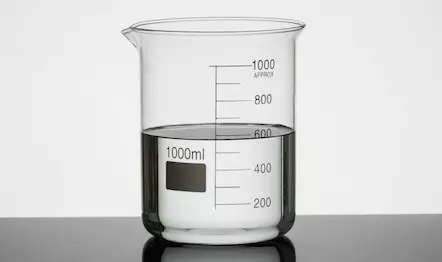IUPAC Name
Prop-2-enenitrile
Cas Number
107-13-1
HS Code
2926.10.00
Formula
H2CH(CH)CN
Industry
Textile Chemicals
Appearance
Clear, Colorless Liquid
Common Names
Vinyl cyanide, 2-Propenenitrile
Packaging
160 kg drum
Brief Overview
Acrylonitrile, also known as vinyl cyanide, is a clear, colourless, liquid with a strong pungent odour and it has a chemical formula of H2CH(CH)CN. At times, it may appear as pale yellow liquid due to the presence of impurities. It is miscible with water and various common organic solvents such as ethanol, acetone, benzene and ether. Being a reactive chemical, it will polymerise spontaneously upon heating and can even explode on contact with flames. Acrylonitrile may also decompose to form free cyanide at elevated temperatures and emit toxic fumes of nitrogen oxides and cyanides.
Acrylonitrile is not found naturally in the environment but it is present in trace amounts at industrial sites. In the air, it will decompose by reacting with oxygen and hydroxyl radical to produce formyl cyanide and formaldehyde.
Acrylonitrile attacks copper and is incompatible with strong oxidisers such as acids, alkalis, bromines, and amines.
Manufacturing Process
Acrylonitrile is typically obtained through the catalytic ammoxidation of propylene where ammonia, propylene and air is reacted with the aid of a catalyst (phosphorus molybdenum bismuth or antimony iron-based) in a fluidised bed. Silica gel is used as a carrier with the reaction carrying out at 400 -500oC at normal pressure. The mixture is passed through a neutralisation tower and dilute sulfuric acid is added to remove the basic unreactive ammonia. Water is passed through the absorption tower to extract the acrylonitrile gas and this gives an aqueous solution. The aqueous solution passed through the extraction tower to isolate the desired product, acrylonitrile. The acidic hydrogen cyanide which is produced as a side product in this reaction is removed in the dehydrocyanide tower and the resulting mixture went through dehydration and rectification to finally obtain the acrylonitrile products with a yield of approximate 75%. This industrial synthesis is by far the most common and preferred way to obtain acrylonitrile.
Textile Industry
Acrylonitrile is often used as a monomer in the production of synthetic fibres, plastics and elastomers. One most common fibre produced from acrylonitrile is acrylic fibre, which at least 85% of the acrylic fibres is made out of acrylonitrile monomer.
Intermediate Chemical
Acrylonitrile is used to produce many important chemicals. It is the intermediate of fungicide bromothalonil, Propamocarb, Pesticide Chlorpyrifos and the intermediate of insecticidal bisultap, cartap. It is also involved in the manufacturing of methyl chrysanthemum pyrethroid, where it plays a role as an intermediate of the insecticides chlorfenapyr. Acrylonitrile is also a chemical intermediate in the synthesis of antioxidants, pharmaceuticals, dyes, surface-active ingredients, etc.
Other Applications
Acrylonitrile is used for the manufacture of rubber, plastics, organic synthesis, pesticide and also used for the calibration of instruments and devices. It is also used for quality control or quality assurances purpose.
